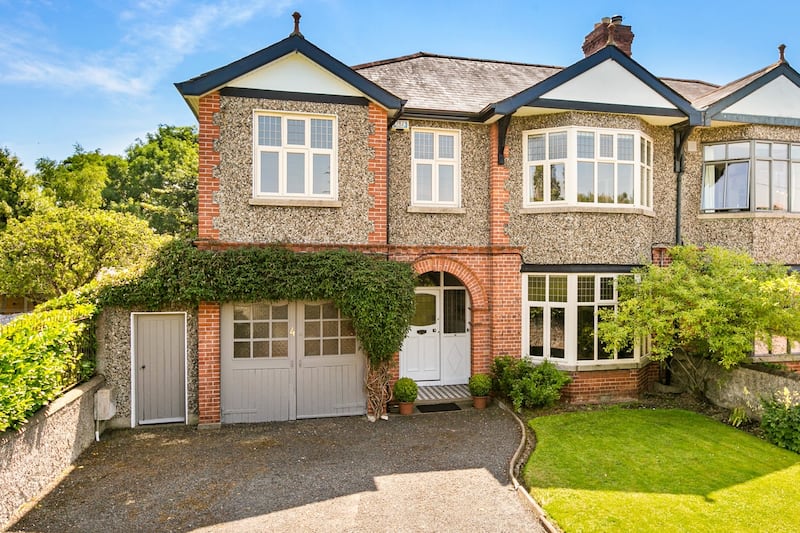If you ever watch property makeover programmers on television, they nearly always follow the same pattern: we start with a wreck or a mildly run-down building, think about a budget and apply a schedule of works. Then, six months or a year later, the television crew return and voila: we are treated to lots of uplifting pictures of “before” and “after”, from drab-and-falling-down to dazzling-and-pristine.
There will also usually be a little round-up of current market conditions – what the house would fetch on the open market both before and after the refurb, and what rent it might now achieve. In this tried-and-tested, if tired formula, property development exists almost exclusively in the present or the very short term future.
Yet I find that when I am dealing with the restoration and repair of properties, or planning the properties’ futures, that the timelines involved – both running back into the past or forward into the future – are far longer than is commonly recognised. I find I am constantly doing investigations far into the past or contemplating developments significantly into the future.
This applies even to the tiniest of details. For example, the other week I was looking at the pointing done on a Victorian building and noticed that it was a patchwork of original lime mortar and more extensive sand-and-cement mortar applied at a later date. If I was just going to repair parts of the wall, would it be better to keep going in sand-and-cement or return to the original lime mortar?
What was the difference between them anyway? Before I knew it, I had tracked down online a 40-page guide to the history of building mortars – analysing all their various virtues and drawbacks – and even found myself reading about the type of lime mortars used on the Pyramids of Egypt.
It's often helpful to have some idea of what the property looked like in previous generations and how it is evolving
Yet that afternoon, as a study in futuristic contrast, a couple of reps showed up at my office to demonstrate heat pumps. To help reduce our carbon footprint, it seems, gas boilers are on the way out and far more eco-friendly and energy efficient heat pumps are on the way in.
The reps spoke of chemical reactions triggered within the pump – the exact nature of the chemicals involved is apparently a trade secret – which heats water to a specific temperature for use in central heating systems or bathrooms. The heat pumps could in turn be powered by solar energy, ground-source heat energy, air-source heat energy or electricity, and there was further confusing talk of power transformers and batteries. Only just having got my head round what type of mortar the Pharaohs used on the Pyramids, it was quite a bit to take in at once.
It’s not just with building materials or heating appliances though that my mind stretches back and forward to distant horizons. I think it pays immense dividends when you own a property to learn as much as you can about both the history of the building – when was it built, who lived there previously – and of the area generally. It’s often helpful to have some idea of what the property looked like in previous generations and how it is evolving. Partly based on this, you can have some idea of where the building and the area are heading in the future.
When people today fantasise, speculate and plan for the 'future', it is nearly always the relatively 'near future'
Looked at with a longer historical perspective for example, it can be startling to discover how quickly certain areas have changed –how city suburbs were once open fields, or how once-fashionable “outer suburbs” became engulfed in urban sprawl and ended up as inner city neighbourhoods. That rate of change is only likely to accelerate in the future.
It’s something of a paradox in the way we conceive of “property development” in our modern age that, despite priding ourselves on our progressive, future-orientated societies, in some ways we tend to be far more short-term in our thinking compared to our ancestors. If you were to start on some project today that would not reach fruition until say 2030, people would think that you were being astonishingly long term in your planning.
Yet look around you and you will see that Europe teems in monumental cathedrals and churches that often took many centuries to complete. I was recently in a cathedral in Spain that was started in 1229 and finished in 1601. Work started on Antonio Gaudi's Basílica de la Sagrada Família in Barcelona in 1882 and it has yet to be completed.
When people today fantasise, speculate and plan for the “future”, it is nearly always the relatively “near future”. It is hard to think of anyone today raising taxes for a construction project that’s likely to reach fruition in 2392.
In that sense, our own age of property developers seem curiously unable to see anything beyond the immediate present. In that sense, the Middle Ages were extraordinarily “forward-thinking” and our own age not able to see anything beyond the “middle distance”.














